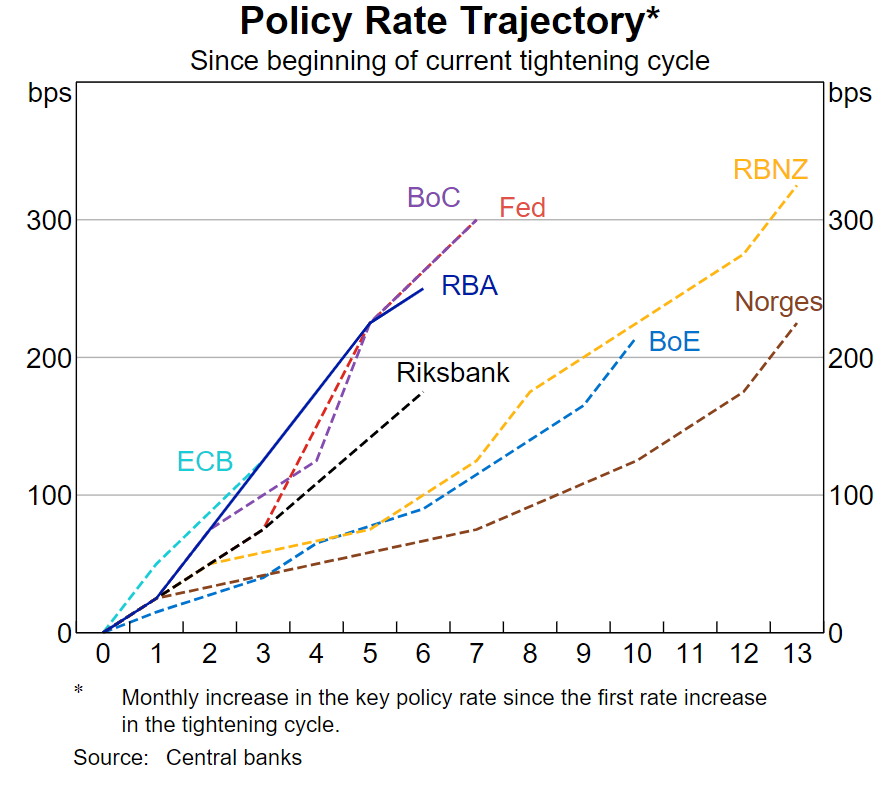The Economist warns that aggressive interest rate hikes by central banks will trigger a synchronised global house price bust, with home values already falling across nine out of 18 countries monitored by Oxford Economics:
As central banks race to tame inflation, they are raising interest rates at the fastest pace in at least four decades—which is now translating into housing-market carnage. Prices are falling in nine of the 18 countries monitored by Oxford Economics… Transactions are also down…
Interest-rate rises have now returned mortgage rates to levels not seen for decades. A year ago the 30-year fixed-rate mortgage in America was below 3%. Today it is only a little shy of 7%. In New Zealand, mortgage rates have passed 7% for the first time in eight years; in Britain, the average five-year fixed-rate loan now exceeds 6% for the first time in a dozen…
Households in Australia, Canada and Sweden, which managed to escape the full brunt of the financial crisis, have run up staggering borrowings in the years since, prompting warnings from financial watchdogs…
The biggest risk is to borrowers on floating-rate mortgages, which fluctuate with changes in policy rates. They face an immediate reduction in their disposable income. In Canada variable-rate mortgages account for more than half of all loans. In Australia and Sweden, they account for nearly two-thirds.
In other countries, fixed-term borrowing is much more common, which means that rate rises pass through with a considerable lag…
Bring this together, and all the ingredients for a deep housing slump are in place. This time, though, it is likely to be led not by America, but by Canada, the Netherlands, Australia, New Zealand and Norway…
The below chart shows how central banks across the globe have hiked interest rates in tandem, with the Reserve Bank of Australia (RBA) near the head of the pack:

As noted above by The Economist, Australia homeowners could be the ‘tip of the spear’ in the global housing rout given the nation’s relatively high house prices, world-beating household debt loads, and high share of borrowers on variable rate mortgages.
For these reasons, the RBA needs to tread carefully on further rate hikes. The 2.5% of tightening already delivered over just six months is up there with the Bank of Canada and the US Federal Reserve as the most aggressive in the world. Yet Australia is carrying significantly more household debt than either nation and it also has a significantly higher share of borrowers on variable rate mortgages.
These two factors alone make Australians more sensitive to rate rises than their American or Canadian counterparts.
That’s why the bond market’s projected 4.4% peak in Australian official interest rates in late 2023 is suicidal.
If the RBA followed through with that level of tightening, Australian house prices would experience an almighty crash, which would very likely push the economy into a nasty consumer-led recession.

